SaaS companies are a dime a dozen these days. You need a solid strategy, a great product, and a keen understanding of your SaaS customer acquisition cost (CAC) to stand out. CAC is the lifeblood of any SaaS business, determining how much you spend to acquire a new customer.
Get it right, and you're on the path to profitability. Get it wrong, and you're staring down the barrel of a financial crisis.
In this guide, we'll dive deep into the world of SaaS CAC, exploring everything from calculation methods to industry benchmarks. We'll also discuss strategies to optimize your CAC and drive sustainable growth.
So, buckle up and get ready to supercharge your SaaS business!
What Is Customer Acquisition Cost in SaaS?

Customer acquisition cost (CAC) in SaaS represents the total sales and marketing expenses required to acquire a new paying customer.
Simply put, it's the price tag attached to winning each new client. This metric is fundamental for SaaS businesses because it directly impacts profitability and long-term viability.
Let's break it down further. In SaaS marketing, you're not just selling a product but a recurring service, a subscription. This means the initial cost of acquiring a customer must be weighed against the customer's lifetime value (LTV). A high CAC relative to LTV can spell trouble, indicating that you're spending too much to acquire customers who aren't generating enough revenue over their subscription period.
That said, let's look at how to calculate customer acquisition cost SaaS in the next section.
How to Calculate Customer Acquisition Cost for SaaS
Calculating your SaaS customer acquisition cost is straightforward but requires accurate data. The basic formula is:
(Total Sales & Marketing Expenses) ÷ (New Customers Acquired) = CAC
Let's break down each component:
- Total Sales & Marketing Expenses: This includes all costs of acquiring new customers during a specific period. Think about salaries, advertising spending, marketing software subscriptions, commissions, and any other relevant expenses.
- New Customers Acquired: This is the number of new paying customers you gained during the same period.
Example:
Imagine your SaaS company spent $50,000 on sales and marketing in a quarter. During that time, you acquired 250 new customers.
Using the formula:
$50,000 ÷ 250 = $200
In this scenario, your CAC is $200. This means you spent $200 to acquire each new customer.
To better understand your customer acquisition cost for SaaS, you should segment your CAC by channel or campaign.
Understanding CAC in Different SaaS Models
Understanding SaaS customer acquisition costs across various models is essential for optimizing marketing strategies and ensuring sustainable growth. Different business models and pricing strategies significantly influence CAC, necessitating tailored approaches for each.
B2B SaaS Customer Acquisition Cost vs. B2C SaaS CAC

B2B SaaS customer acquisition cost often dwarfs its B2C counterpart. This disparity stems from the complex sales processes inherent in B2B.
Long sales cycles, multiple decision-makers, and the need for personalized demos and high-touch support all contribute to higher CAC. In contrast, B2C SaaS businesses often rely on self-service models and broad marketing campaigns, resulting in lower CAC.
How CAC Differs in Enterprise SaaS, Self-Serve SaaS, and Freemium Models
The structure of a SaaS company's service model also impacts CAC in the following ways:
|
Structure |
Impact on CAC |
|
Enterprise SaaS |
These clients demand extensive onboarding, tailored solutions, and ongoing support. The complexity and scale of enterprise deals justify higher acquisition expenses. |
|
Self-Serve SaaS |
This model aims for a lower CAC through automated onboarding and minimal human interaction. |
|
Freemium Models |
While the initial acquisition cost might appear low due to the free offering, converting free users to paying customers is the challenge. |
The Impact of Pricing Models (Subscription vs. One-Time Payment) on CAC
Subscription-based SaaS businesses calculate CAC with the understanding that they'll recoup the initial investment over the customer's lifetime. Conversely, one-time payment models require a lower CAC to ensure immediate profitability.
The recurring revenue of subscriptions allows for a higher initial CAC, as the customer's long-term value justifies the expense. When analysing customer acquisition cost for SaaS, always consider the pricing structure.
SaaS Customer Acquisition Cost Benchmarks
Understanding where your SaaS customer acquisition cost stands relative to industry standards can provide valuable context and highlight areas for improvement. Let's elaborate below.
Average Customer Acquisition Cost for SaaS Businesses
The average CAC for SaaS companies varies widely based on factors such as target customer type and industry. Generally, CAC can range from $200 to $700.
For instance, enterprise software companies often experience higher CACs, sometimes exceeding $400, due to complex sales cycles and substantial contract values.
CAC Benchmarks Based on Business Size and Industry
CAC benchmarks fluctuate not only across industries but also with the size of the business:
- Company Size: Smaller SaaS firms typically have shorter CAC payback periods, with small businesses averaging 9-12 months, while enterprises may see payback periods extending to 18-24 months.
- Industry: In the e-commerce sector, the average payback period ranges from 8-12 months, whereas in healthcare, it extends to 12-18 months.
How to Compare Your CAC Against Competitors
To effectively benchmark your CAC against competitors, do the following:
- Gather Industry Data: Utilize industry reports and studies to obtain average CAC figures pertinent to your sector and business size.
- Calculate Your CAC: Use the standard formula: CAC = Total Sales and Marketing Expenses ÷ Number of New Customers Acquired.
- Analyze and Adjust: Compare your CAC to industry averages to identify areas for improvement.
The Relationship Between CAC and Other Key SaaS Metrics

Here's how CAC relates to several essential metrics:
- Customer Lifetime Value (LTV): A higher LTV justifies a higher CAC, as the long-term returns outweigh the initial acquisition costs. Conversely, if LTV is low, companies need to minimize CAC to maintain profitability.
- CAC-to-LTV Ratio: The CAC-to-LTV ratio compares the cost of acquiring a customer to their revenue. A commonly accepted benchmark is a 3:1 ratio, indicating that the LTV should be three times the CAC.
- Payback Period: The payback period measures the time required to recoup the CAC through revenue from the acquired customer. A shorter payback period indicates a quicker return on investment. A payback period of between 6 and 12 months for SaaS companies is considered healthy.
- Churn Rate: Churn rate refers to the percentage of customers who discontinue their subscription within a given period. High churn rates mean customers leave before the company can recover its CAC, leading to financial losses. Lowering churn enhances CAC efficiency by ensuring customers remain long enough to generate the desired revenue.
Strategies to Reduce Customer Acquisition Cost in SaaS
Lowering your SaaS customer acquisition cost is crucial for sustainable growth. Here are some effective strategies:
- Optimizing Marketing Efficiency: Refine your target audience by developing detailed buyer personas and leveraging data analytics to focus on high-conversion segments.
- Improving Sales Conversion Rates: Streamline your sales process by providing clear, concise communication and comprehensive product demonstrations to address potential customer concerns promptly.
- Maximizing Customer Retention and Expansion: Invest in exceptional customer support and success initiatives to foster strong relationships and encourage long-term loyalty.
Tools and Software to Track and Optimize CAC

Effectively managing your SaaS customer acquisition cost requires the right tools and software. Let's look at some below:
Best Analytics Platforms for Monitoring CAC
Notable tools here include:
- Kissmetrics: Provides detailed analyses of customer behaviour, enabling businesses to build reliable cohorts and sales funnels based on actual customer interactions.
- Woopra: Offers end-to-end customer journey analytics, integrating data from various touchpoints to optimize acquisition.
- Mixpanel: Focuses on user behaviour analytics, allowing companies to track interactions and identify trends that impact acquisition costs.
CRM and Automation Tools to Streamline Acquisition Efforts
Integrating Customer Relationship Management (CRM) systems like Salesforce, HubSpot, and Zoho CRM streamlines your sales process and improves customer relationship management.
Additionally, automation tools like Marketo and Pardot automate marketing tasks, nurture leads, and personalize customer interactions. These tools help you optimize your sales funnel, improve conversion rates, and reduce the time and resources required to acquire new customers, directly impacting your B2B SaaS customer acquisition cost.
AI and Predictive Analytics for Improving CAC Efficiency
Artificial Intelligence (AI) and predictive analytics can play a pivotal role in enhancing CAC efficiency by forecasting trends and automating data analysis. Implementing AI-driven tools can lead to more informed decision-making and optimized marketing efforts.
By incorporating these tools into their operations, SaaS companies can gain valuable insights, automate processes, and ultimately reduce their CAC, paving the way for sustainable growth and profitability.
Conclusion
Understanding and effectively managing your SaaS customer acquisition cost is paramount for the success and sustainability of any SaaS business. It's not just about how much you spend to gain a customer, but about the customer's long-term value and the efficiency of your acquisition strategies.
If you're interested in expert guidance in optimizing your SaaS customer acquisition strategies, partnering with a specialized B2B SEO agency can be highly beneficial.
At Roketto, we specialize in propelling SaaS and B2B tech companies toward sustainable growth through our expertise in inbound marketing and web design. Our data-driven strategies and compelling content are designed to attract, engage, and convert leads effectively.
By using our expertise, your SaaS business can develop and implement effective strategies to reduce CAC and drive sustainable growth.
Contact us today to learn how our expert team can help you optimize your acquisition strategies and achieve sustainable success.

Peter Kamau
Peter is a content writer and strategist with a focus on SEO, B2B, and SaaS. He helps digital agencies and growing businesses build their online presence through thoughtful, search-optimized blog content. Peter delivers high-quality, well-researched content that’s both engaging and effective. Outside of work, he enjoys reading non-fiction books, exploring new places, and getting lost in a good podcast.



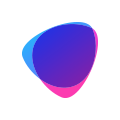







2.png)
2.png)

